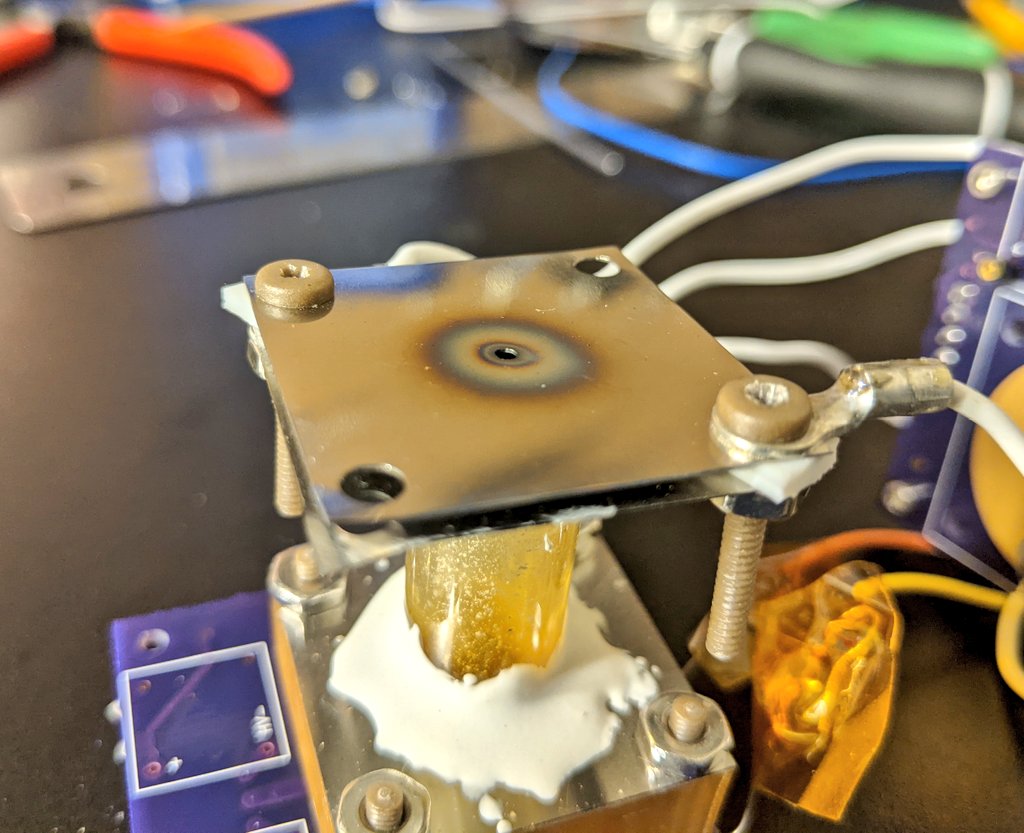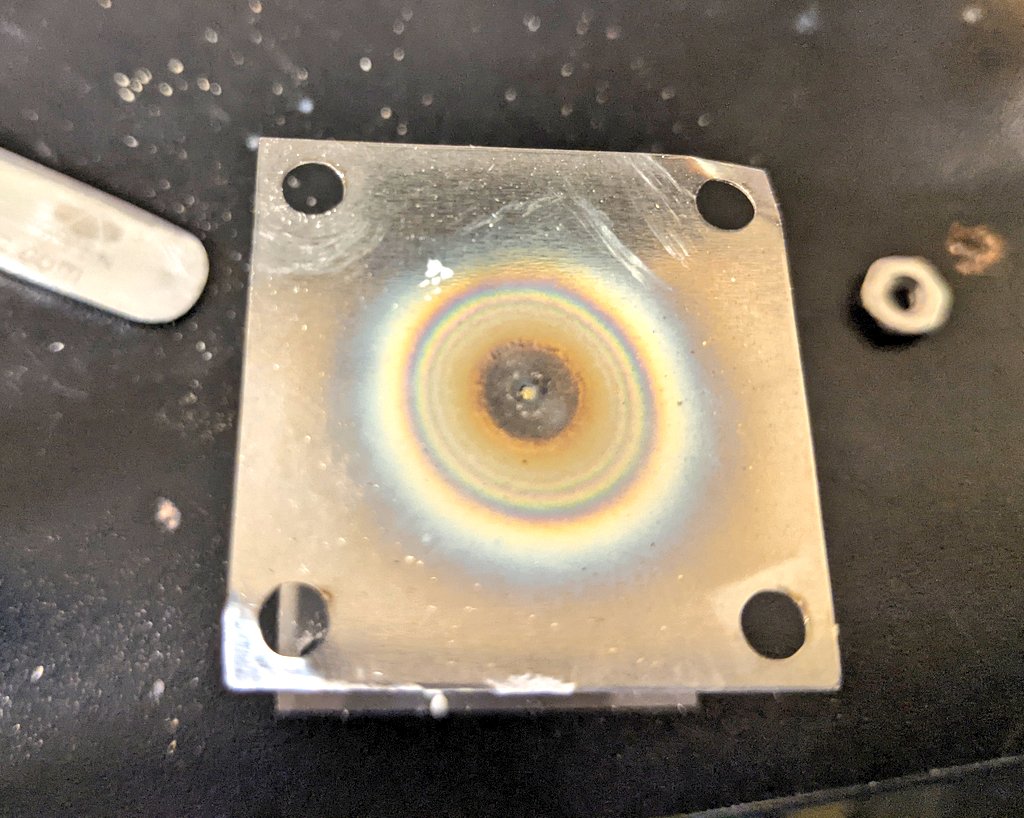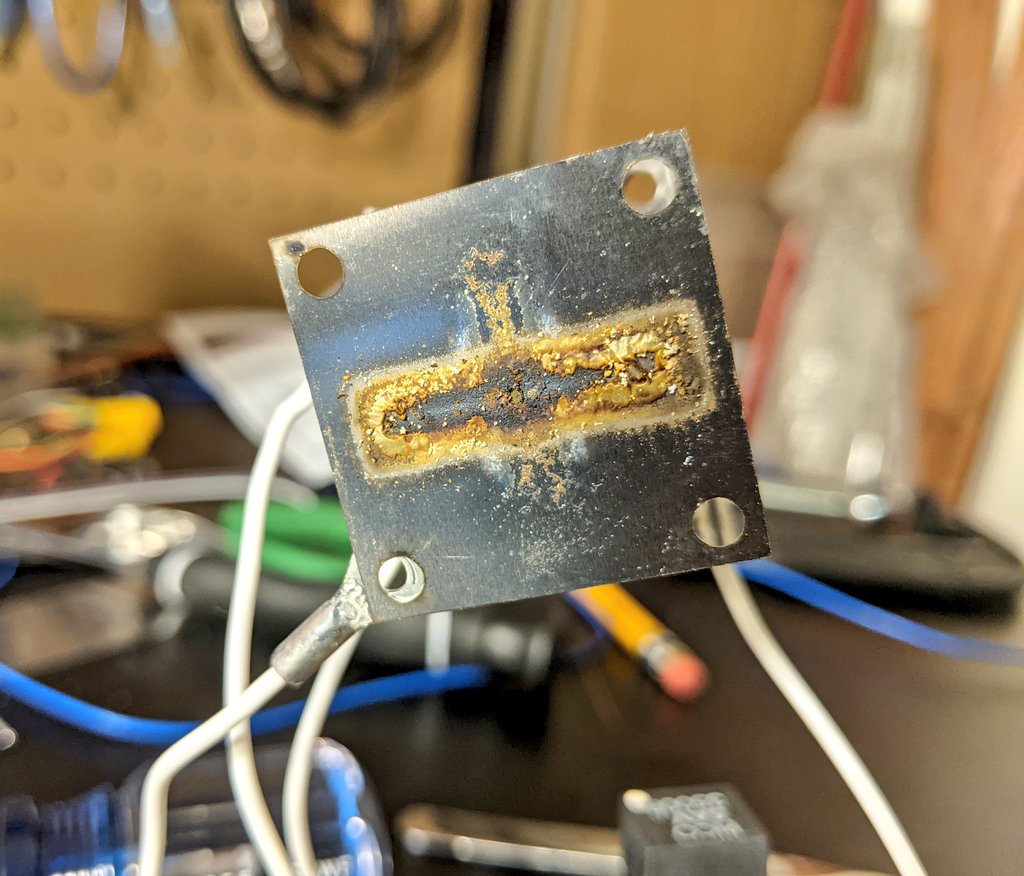On Sunday night I ran the third sublimation and glow discharge ionization test of Adamantane in vacuum for the AIS-ADAMANT Series development. Details of the first test can be found HERE, and details of the second test can be found HERE.
In this test, I modified the original discharge cell to explore simulating discharge and extraction similar to how the AIS-GDN1 Glow-Discharge Hollow-Cathode Neutralizer will be operated. Using some pieces of 1/16″ thick Teflon as HV spacers, I set up a second plate above the top plate on the discharge test cell for extraction. In this configuration, the bottom plate has -HV applied, the middle plate is at ground, and the top plate is at +HV. This is similar to one of the configurations for the GDN1 in low voltage extraction mode. In this case, a glow discharge is established between the -HV plate and the ground plate. With a +HV applied to the top plate, extraction of electrons is facilitated.
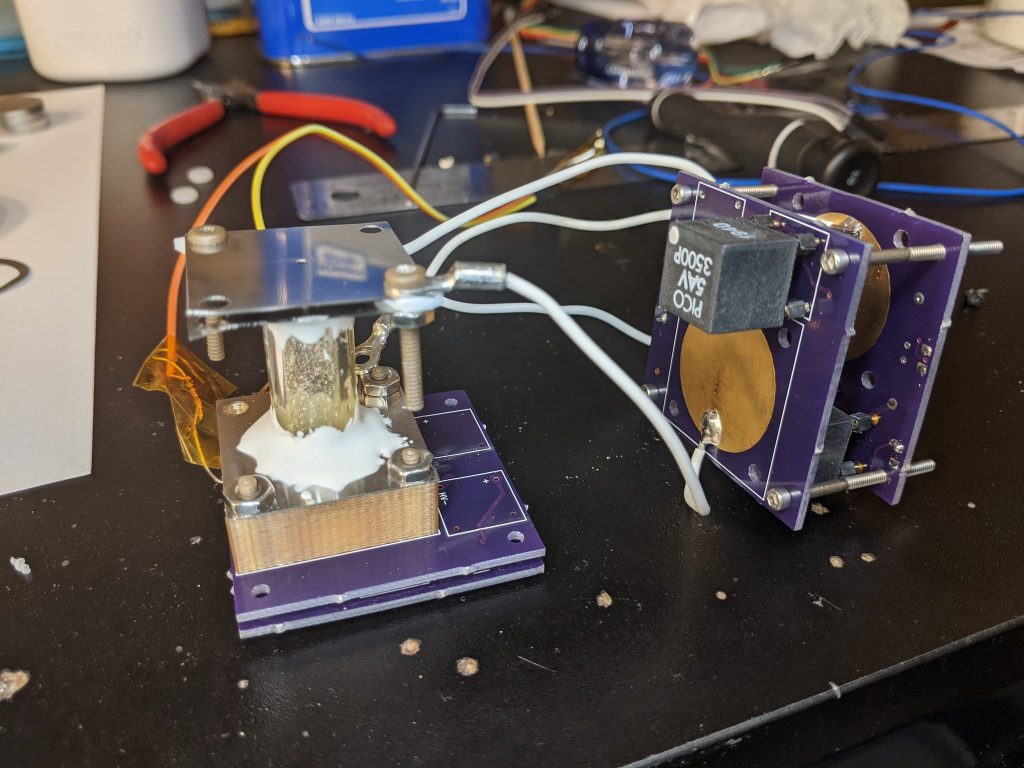
The system was loaded into the vacuum chamber, and pumpdown began. Like the prior two tests, the max vacuum achieved was mid-10^-4 Torr.
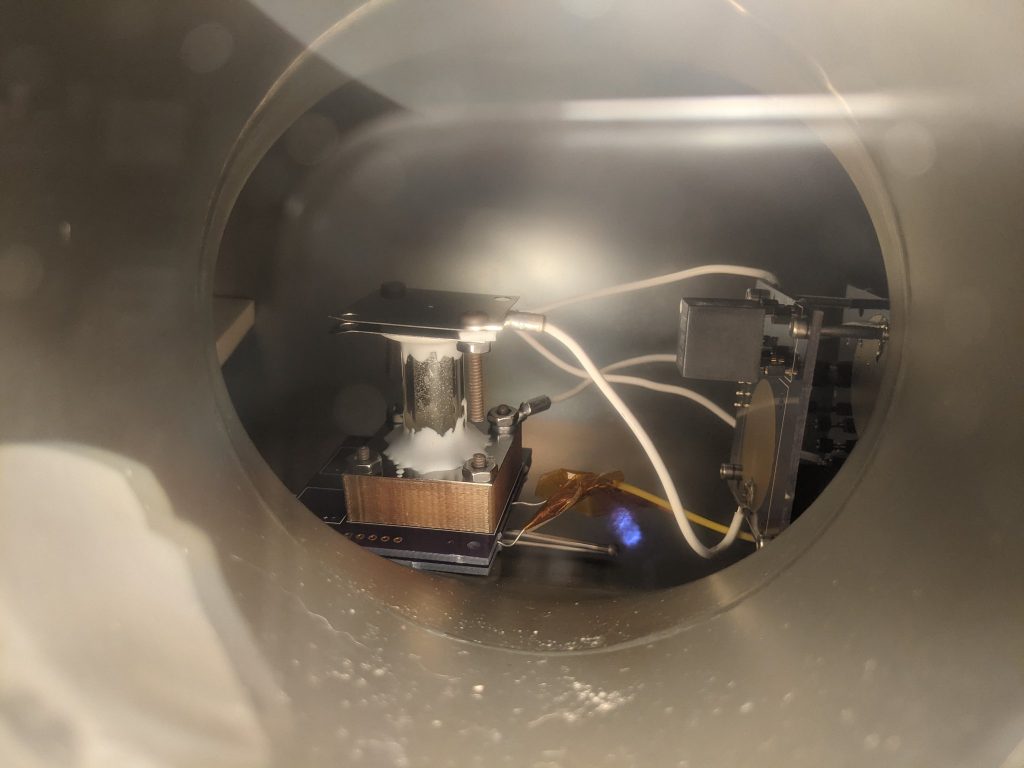
First, the -HV supply was turned on, easily achieving a stable glow discharge at low power levels. Like the second test, no heater power was used, and discharge was sustained purely on passively sublimated Adamantane vapors at 14.5C ambient.
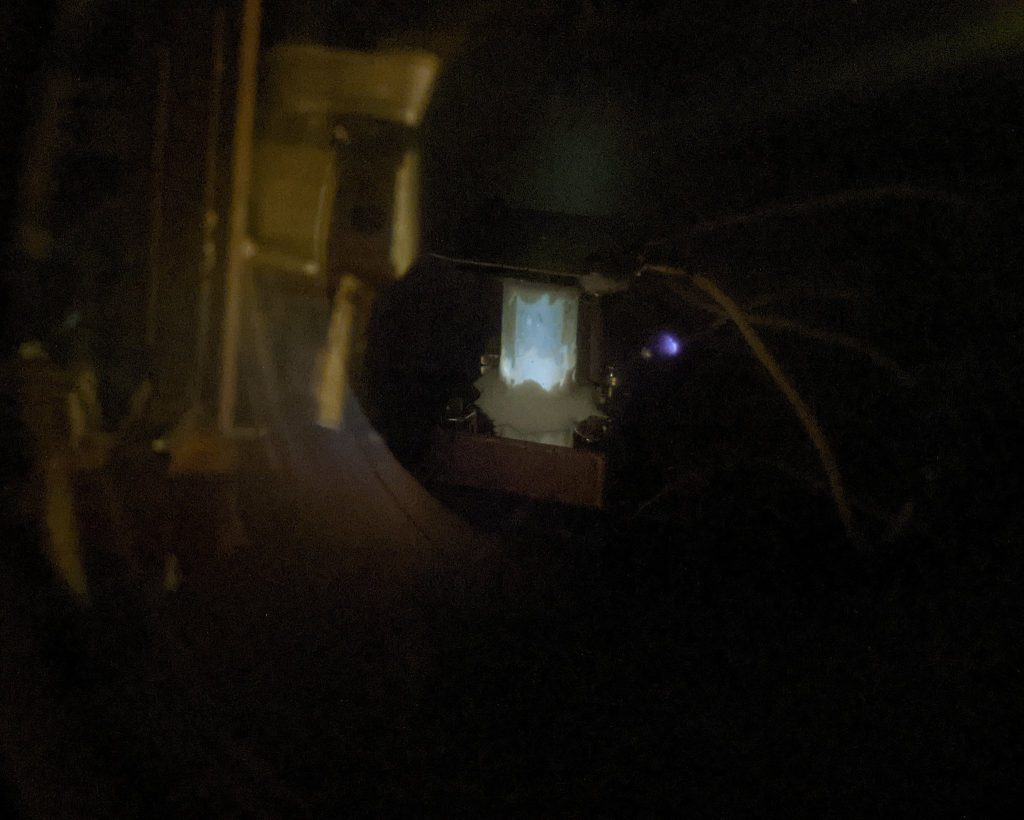
Once the discharge was established, the +HV supply on the extractor electrode was turned on and slowly increased. Immediately, a noticeable plume emerged from the aperture of the extractor plate.
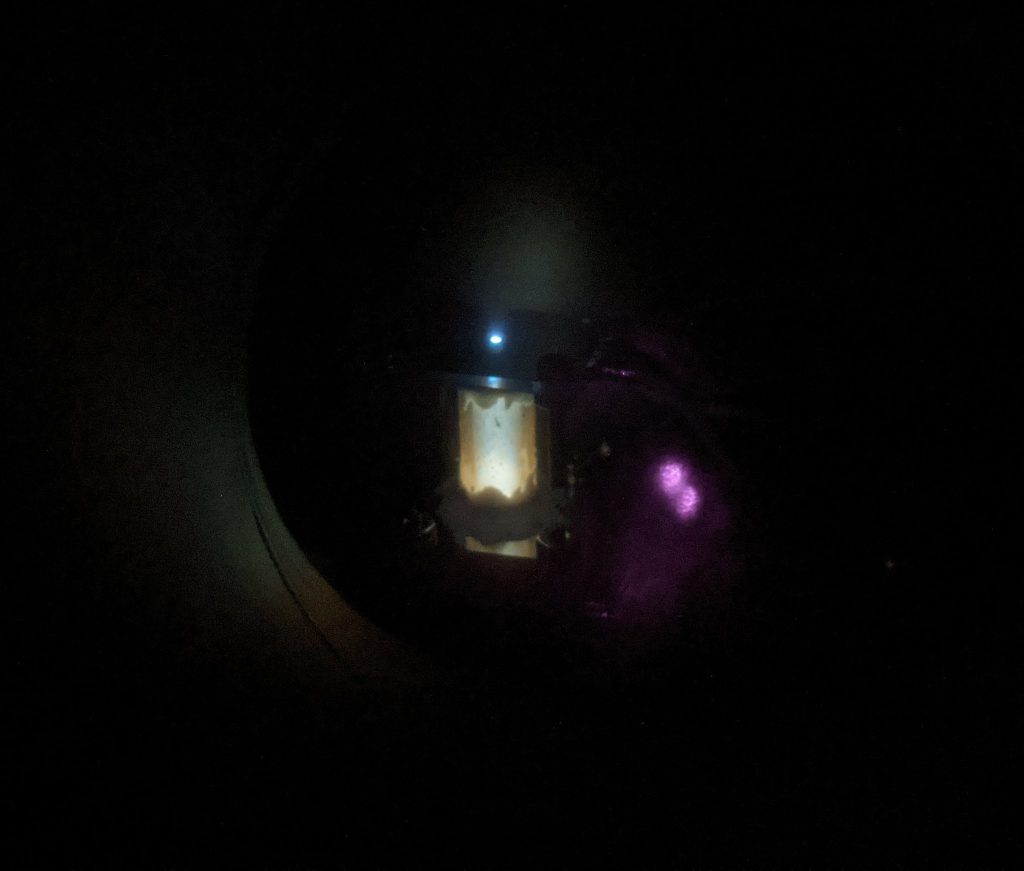
Power was cycled on and off several times to verify the effect, and each time the extracted plume was reignited with ease. Next, 3.5W of heater power was applied, increasing the sublimation rate as well as the pressure inside the discharge cell. The discharge got noticeably more dull inside the cell, but the plume formation remained on the extractor output.
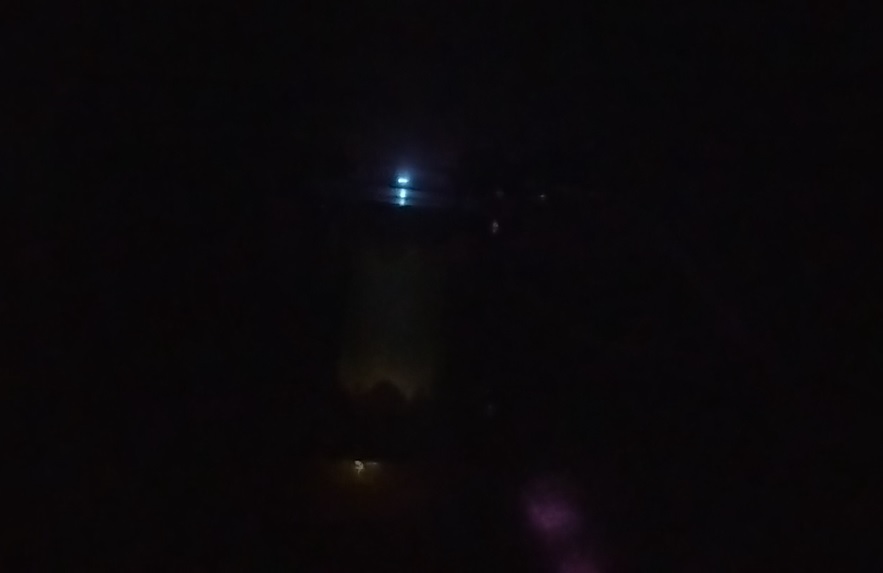
I began to adjust the -HV power supply to see the effect on the discharge. Lowering the main discharge supply down, the extracted plume intensity suddenly became significantly more intense. Adjusting the +HV extractor voltage up, the plume output continued to increase with intensity, appearing much more like the plasma plume output from a hollow-cathode neutralizer source. At this point, both HV supplies were operating at a combined power of only 3.2W, with 3.5W of additional power for the sublimation heater.

Multiple videos were captured during the test. In this first video, you can see the starting transition between low output and high output mode. Discharges can be seen between the top two plates for extraction, as well as the output plume. In addition, you can also see a plasma channel column that forms between the extractor and ground plate apertures right underneath the output plume.
This second video shows the extracted plume at 3.2W discharge and extractor power at 3.5W heater power. Notice the significantly higher intensity of the plume, as well as the stable operation of the plume.
After the test, the test cell was removed from the chamber and inspected. Very clear signs of sputter and erosion can be seen on the extractor and grounded discharge plates due to the plasma, which is significantly more pronounced than the prior two tests running with just discharge power alone and no extractor. Buildup and charring was also more severe on the bottom plate due to plasma leakage into the fuel sublimation cell.
Overall this was another incredibly successful test for the ADAMANT Series effort. Building off of the prior two tests, I successfully initiated a stable extracted plasma plume from the discharge cell with the addition of an extractor plate and second HV supply, with the cell reconfigured to be wired in a similar manner to the GDN1 Glow-Discharge Hollow Cathode Neutralizer. At only 3.2W total power for discharge and extraction, the plume was noticeable intense for such a small test cell, with a 1.4mm diameter output extractor aperture. This gives the GDN1 development significant confidence moving forward, bringing me one step closer to realizing this ultra-low-cost, low power micro propulsion system, and further validating the use of Adamantane fuel for such EP developments.

